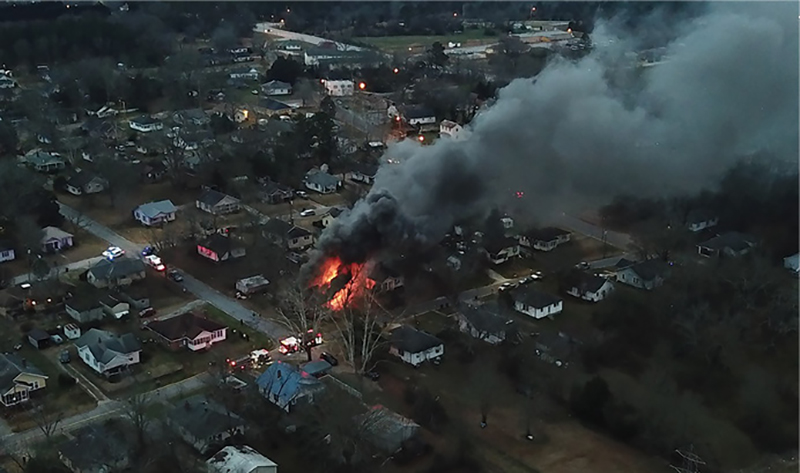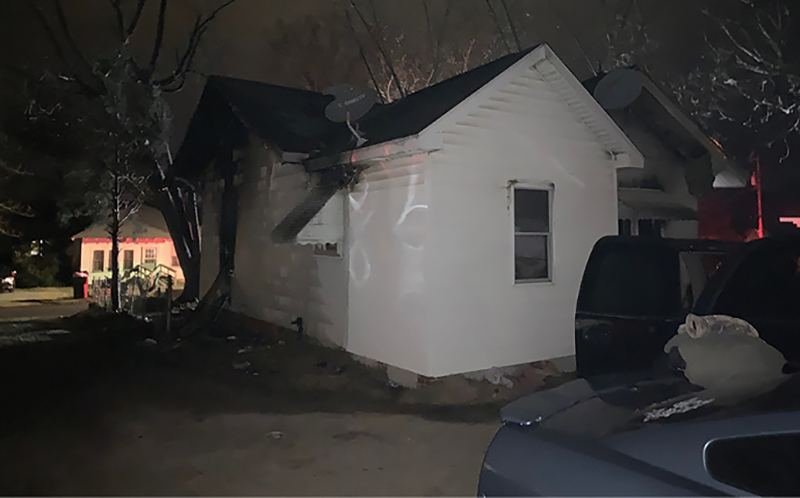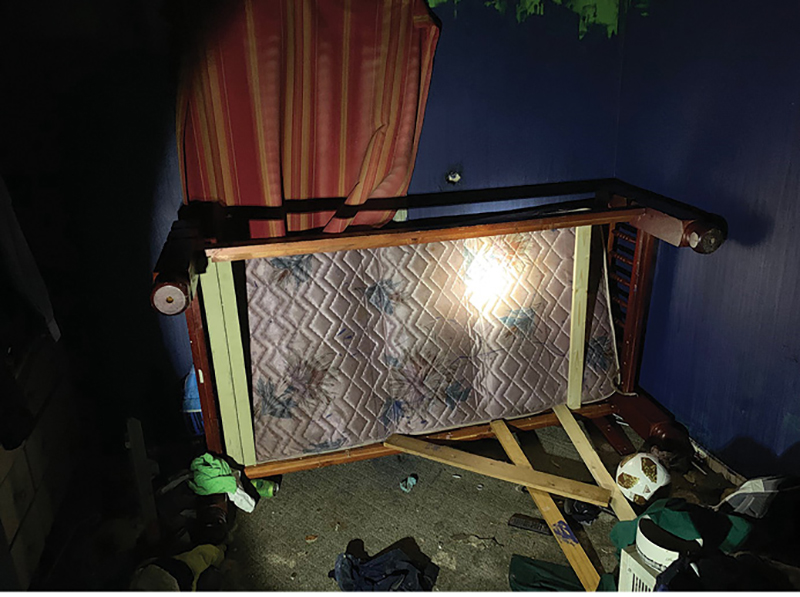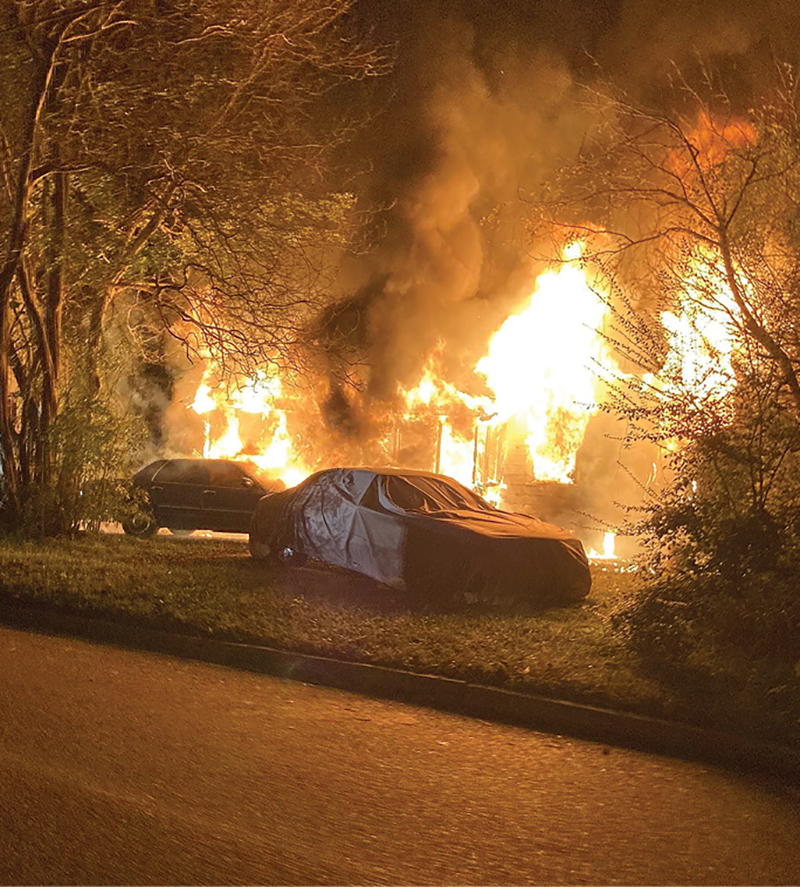By Andrew Morris
My crew entered a concrete masonry single-family home with fire venting from the rear of the structure that was pushing toward the front door. As our firefighters pushed into the house through the front door, the thermal layer was two feet from the floor; then we heard command call us out of the structure. My crew and I reluctantly started to back out. As we exited the structure, command told us that new information from a neighbor had indicated that everyone was out of the house. We waited for reassignment and finally received the assignment we were hoping for. We pushed through the house, found the seat of the fire, and had a great knockdown but found two civilian casualties. The victims were one room past our initial push into the house. We felt that we had done everything we could have done, but the questions were still locked in our minds: Could we or should we have pushed more? If the neighbor had not said everyone was out, would we have been pulled out? Would it have made a difference? This experience started the Survivability Profile Framework (SPF) (Figure 1).
Evaluate Crew Capability
Fireground success or failure relies heavily on tactics, which are influenced by the size, knowledge, skill, and experience of the crews performing these tactics. The National Institute for Occupational Safety and Health (NIOSH)1 has identified the top five casualty factors for firefighter deaths and injuries on the fireground; the number-one factor is improper risk assessment. Armed with the knowledge provided by studies, recommendations, and other leadership models, we can assess crew capability and break crew capability into four measurable categories: crew size, knowledge, skill, and experience.
- RELATED FIREFIGHTER TRAINING
- Survivability Profiling: Are the Victims Savable?
- Survivability Profiling: How Long Can Victims Survive in a Fire?
- Survivability profiling: another perspective
- Searchable vs. Survivable: Educated Decision Making
- Survivability Profiling: Applying What We’ve Learned
Crew Size
A 2010 National Institute of Standards and Technology (NIST)2 study of crew size and its influence on saving lives and property showed that four-person crews could complete 22 essential firefighting and rescue tasks 30 percent faster than two-person crews and 25 percent faster than three-person crews. This study focused directly on fire extinguishment and rescuing occupants. Simply adjusting your crew size makes a big difference.
Knowledge
Sir Francis Bacon is credited with the saying, “Knowledge is power.” This is true in the fire service, but to truly understand knowledge, we must view it as potential energy. Just as a sofa in a structure is potential energy as fuel, it provides no kinetic energy until it is actively pyrolyzing. It is through knowledge that inexperienced individuals learn the lessons learned by their predecessors. Knowledge is not a substitute for experience but provides an awareness and foundation in developing skill.
Skill
For every crew operating on the fireground, it is the first time performing the tasks assigned to them in that particular instance. Every fire scene presents variables that require crews to apply their knowledge in a different manner than in the past. High-quality training can and should overcome most of these environmental variances. However, to truly develop aptitude in applying their knowledge effectively and readily in performance, these crews must be proficient to a superior level of training above that in routine annual review.
Figure 1. Survivability Profile Framework

Figure by author.

(1) At this house fire, the structure had a survivable space. (Photo by Melvin Dominick.)
Experience
There is no substitute for experience, but you can and should develop it. Vicarious experience is one of the easiest forms of experience to gain; some call it a kitchen table education or simply stories. We must ensure that a member with years of experience is not walking out the door to retirement without passing on those experiences. If a 30-year employee retired and took his computer and all the files he worked on over his career, the business would require the items returned. But every day, the fire service loses resources far more valuable than a computer or files. If departments will invest and take advantage of their own expertise, they can create a culture of expertise that will have an ongoing effect on the service.
Experience vs. Exposure
If crews are not developing experience, they are falling into exposure, the most detrimental place for firefighters. They can talk the talk and believe they understand and have experience, but they have only learned how to be part of a conversation or talk the lingo. The key difference in experience is that an individual will understand how to combine his knowledge, skill, and observation of past events into actions or decisions for future events with predictable outcomes.
Collecting Empirical Data
Empirical data is available to all members on a fire scene and is key to finding cues that lead to tactical objectives. Empirical data must be objective and without bias. You must collect through your senses such data as observable existing factors, experimental results, and personal experience.
Observable Existing Factors
Although experimental empirical evidence is of great value, observable existing factors are among the most telling forms of empirical data. These elements exist at every structure fire, and we can train firefighters and officers to recognize them. Photo 4 contains several observable existing factors listed below.
Structure design and layout. Compartment volume, ceiling height, compartmentation or open floor plan, existing or potential ventilations, kinetic energy, and potential energy.
Windows. Thermal failure; darkened by condensation; visibility (blinds, drapes, or generalized clarity); size, type, and proximity; and air-conditioner units.
Fire conditions/behavior. Exothermic heat release rate (energy flux), heat transfer to occupant location, the presence of smoke and the conditions generated (laminar or turbulent smoke, density, gas concentration, coverage within a designated structure, neutral plane in relation to occupant space), and weather conditions (wind).
Other observable existing factors. Vehicles present, structure doors locked, toys in yard, and specialty disability equipment (ramps, stairlifts).

(2) The rear of the house. Note the clarity and absence of darkening or condensation in the window. (Photo by author.)

(3) A survivable space in a rear room of the house. (Photo by author.)

(4) A Survivability Profile Framework is about prioritization and execution of tactics based on survivable space. Here, using observable factors, cars in the yard indicate victim potential, but fire dynamics show survivability is unlikely in the front of the house. (Photo by Sean Poole.)
These observable factors are key elements of empirical data and provide companies and commanders with visual cues to tenability. Cues are vitally important to building an effective survivability profile, and if we do not observe and use cues to help develop a survivability profile, our companies and commanders will allow subjective information to control the pace or, worse, dictate and set incident priorities.
It is common for first-arriving crews to hear statements such as, “My baby is inside.” These are also cues, but we must ensure this information does not dictate our actions or “drive” the scene. Such statements do not make the space a survivable space; we should not allow them to establish our incident priorities. When SPF is used, it ensures that crews are using information to set educated priorities.
Experimental Results
We can use preexisting experimentation studies to teach facts, but we can also demonstrate and engage our crews in experiments that bridge the gap between experimentation and personal experience. Experiments such as burning a dollhouse prop or even a box with a controlled vent opening allow us to explain and demonstrate fire dynamics but also allow our crews to develop their own memories and stories and create personal experiences.
Personal Experience
Personal experience provides the benefit of different cues acting as triggers and pivotal points. In the fire service, gaining personal experience can be difficult. Not all crews can develop a personal experience pool of memories broad enough to meet the needs of their careers. To supplement this, we can use simulations, training, or others’ experiences as a pathway that can provide a more beneficial platform than some personal experience.
Using the Recognition Primed Decision Making Model
An extensive study of a fireground commander’s decisions was performed in 1985 when the U.S. Army Research Institute for the Behavioral and Social Sciences studied the human side of battlefield decision making. Gary Klein’s research company was awarded the contract and decided to use fireground commanders as his control group.3
Recognition Primed Decision Making: Saving Precious Time for First-In Crews on the Fireground
Klein and his team discovered that commanders were not refusing to compare options; they simply didn’t have to. Klein originally thought that commanders would compare at least two theories and pick the best one. Instead, he discovered recognition primed decision making. Commanders pull from a queue of actions, not trying to find the best one but instead selecting the first plan that worked. It is more similar to a contingency (try Plan A; if it doesn’t work, try Plan B) rather than a choice (A vs. B). What Klein and his team discovered was experts were able to perform the Plan A…B…contingency whereas novices had to perform Plan A vs. B comparisons.
Deploying Resources
Without execution, objectives are just ideas. The fire service has excelled at resource deployment and has been able to accomplish operational objectives in a small amount of time, even at large-scale events with multiple agencies. Resource deployment is not the end of the SPF. Assessment must be ongoing and the survivability profile must change in accordance with the cues and fatigue of crews performing those assignments. Once we reach the stage of deploying resources, our next action must be an ongoing reassessment.
Ongoing Reassessment
Remember that the initial evaluation of crew capability will change throughout an incident. Crews may be reassigned or divided up, changing the overall experience of the teams. Skill will also decline as fatigue begins to hinder fine motor functions. The empirical data will change not just over time but with each intervention—windows, doors, ventilation, and air entrainment will all have varied levels of impact on the cues that must be observed.
Not only do we need to observe what we can see but also what we don’t see. Negative cues are a large part of our ongoing assessment. If our suppression crews are inside the structure and we see no change in smoke volume, velocity, density, or color, we know that crews are not making an effective attack on the fire. Risk vs. reward is easy to remember but does not truly give anyone a road map for decision making, much less a decision that sends crews into harm’s way. Survivability profiling4 qualifies the risk vs. reward ethos. Departments of any size and individuals of any level of experience and any rank can use the SPF to better understand the concept. The SPF gives guidance and measurable standards based on real-world input from incidents. It can be taught to any audience from tailboard firefighters to chief officers and can easily be adapted for firefighters according to their level of expertise.
The SPF gives companies and commanders what they needed to confidently decide when to commit crews to dangerous, life-threatening situations. Every decision crews make is vital, but few surpass the survivability profile the first crew on scene makes. This decision has the advantage of early intervention and sets the tone for all actions that follow, affecting every life on the fireground or emergency scene. With lives in the balance, there must be an effective standard to help make decisions that impact these lives—including those of our firefighters. We must never forget that every life is worth saving.5-9
Endnotes
1. National Institute for Occupational Safety and Health. (2014). From Risky Operations to Safe Operations. https://passitonfiretraining.wordpress.com/2014/11/02/the-niosh-5.
2. National Institute of Standards and Technology. (2010). Landmark Residential Fire Study Shows How Crew Sizes and Arrival Times Influence Saving Lives and Property. https://bit.ly/3EY2mrB.
3. U.S. Army. (2018). Maneuver Self Study Program. https://bit.ly/3qfzC7F.
4. Klein G (1999). Sources of Power: How People Make Decisions. Cambridge, MA: MIT Press 1999, ISBN 0-262-61146-5.
5. Marsar, Stephen. Survivability Profiling: Are the Victims Savable? Fire Engineering, December 2009, 69.
6. Marsar, Stephen. Survivability Profiling: How Long Can Victims Survive in a Fire? Fire Engineering, July 2010, 77.
7. Marsar, Stephen. Survivability Profiling: Applying What We’ve Learned. Fire Engineering, July 2011, 67.
8. Morris, Gary. “Victim survival profiling is smarter decision making.” Letters to the Editor. Fire Engineering, May 2011, 34.
9. FireRescue. Survivability Profiling Takes Size-Up to a New Level. November 2011, 32. https://bit.ly/3pZrc3U.
Andrew Morris is a captain with the Newberry (SC) Fire Department, filling assignments from incident command to squad leadership. He joined the fire service in 2006 and served as the section chair of the South Carolina Firefighter Association Officer Section. Morris is a graduate of the South Carolina Firefighters Association’s Leadership Institute and has received his department’s Firefighter of the Year Award and the South Carolina State Firefighters’ Association’s James B. Murphy Firefighter of the Year Award.

